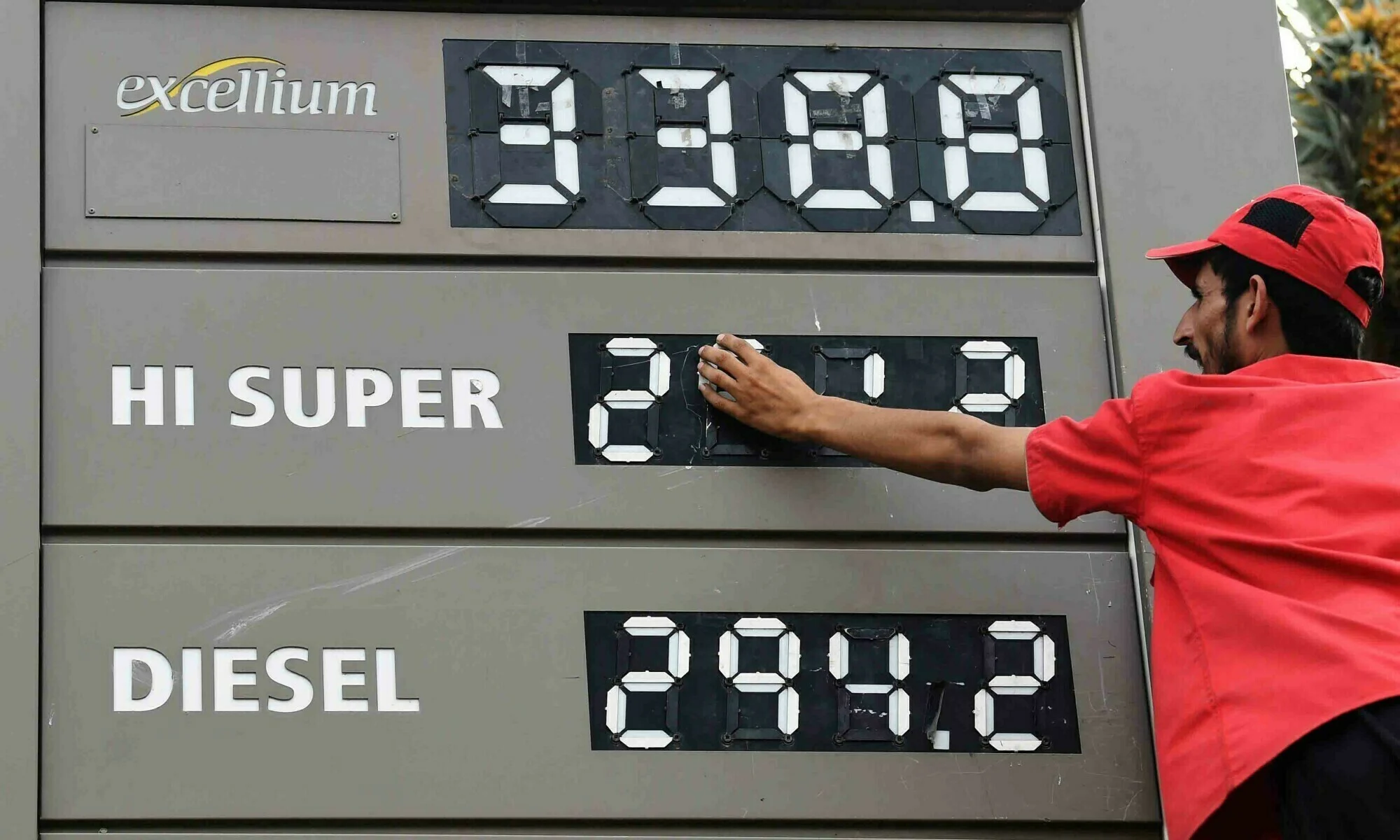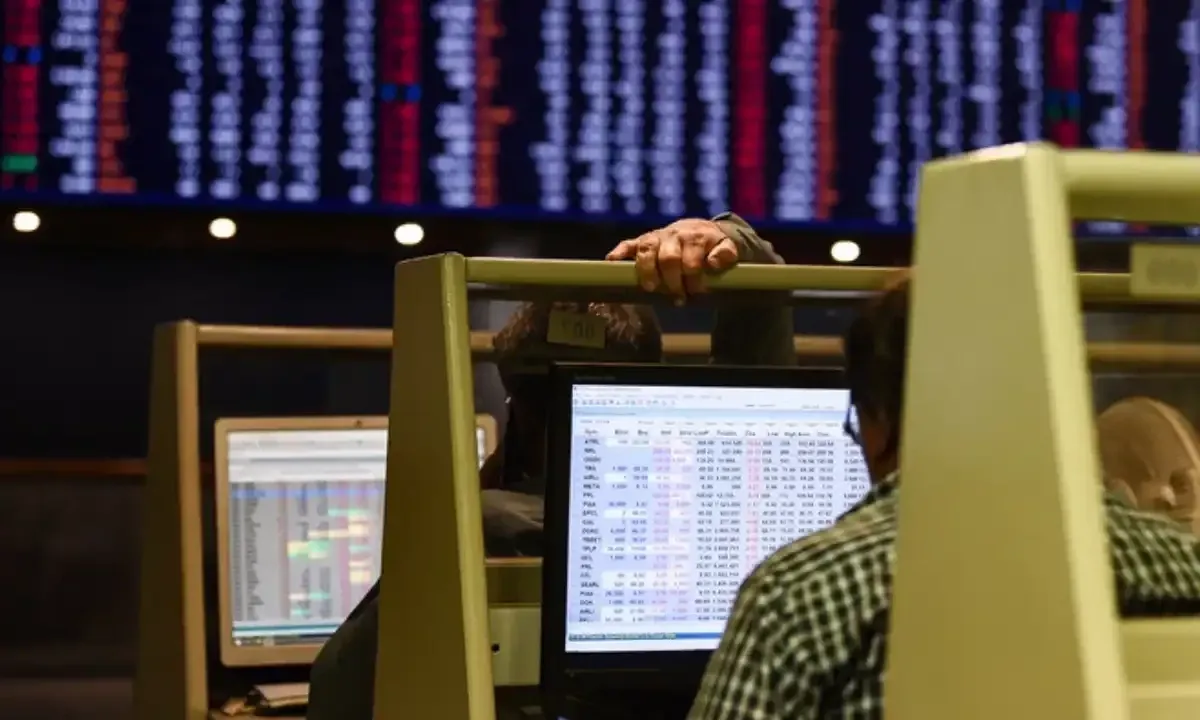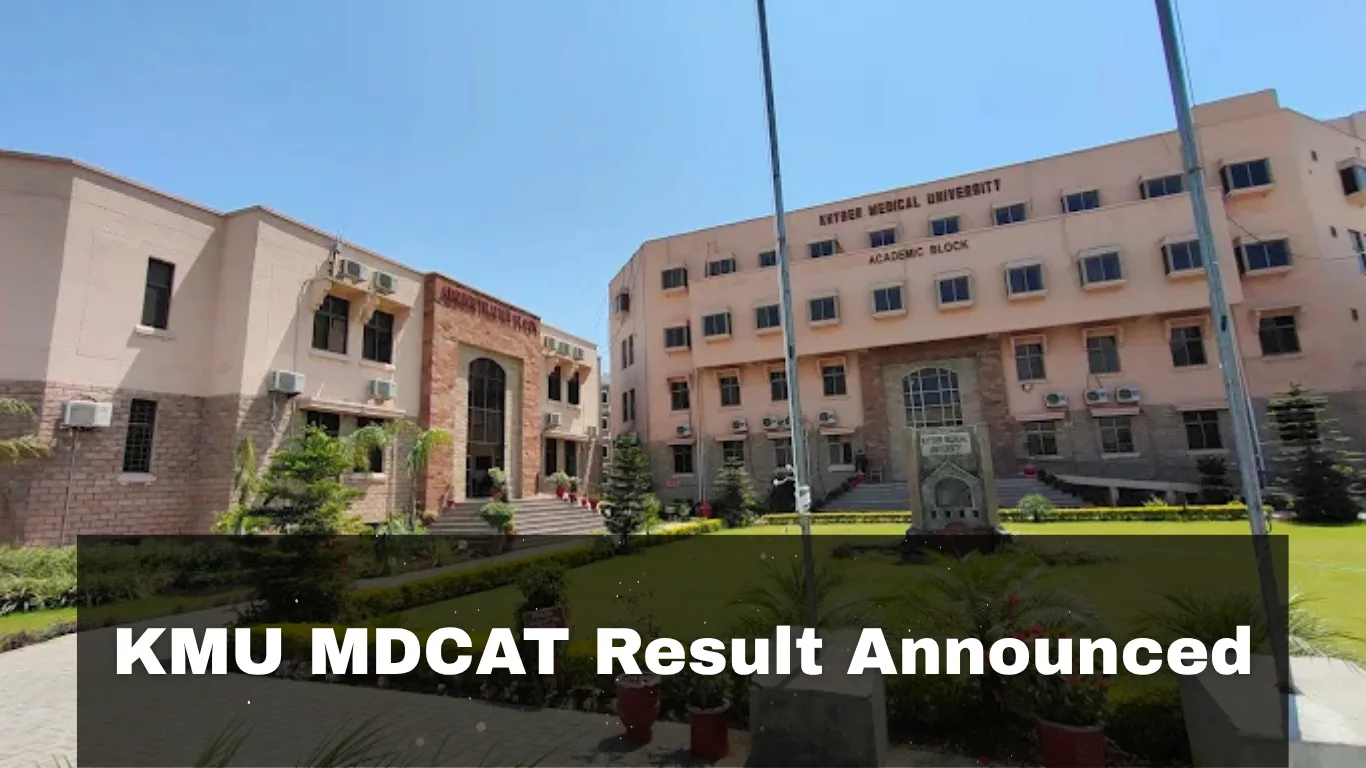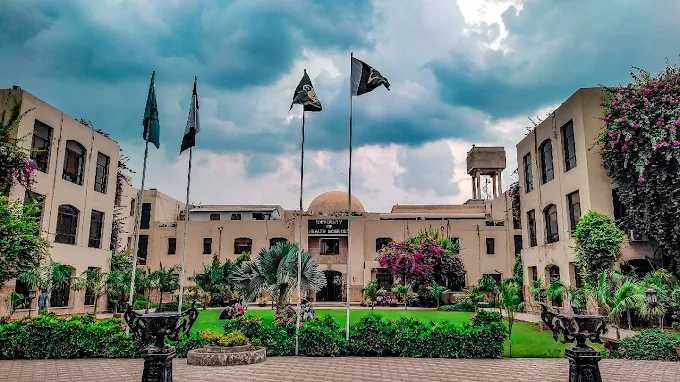In a major relief for consumers the federal government of Pakistan has announced a significant reduction in the prices of petroleum products for the upcoming fortnight. According to a notification issued by the Finance Division, the new rates have been implemented on the recommendations of the Oil and Gas Regulatory Authority (OGRA).
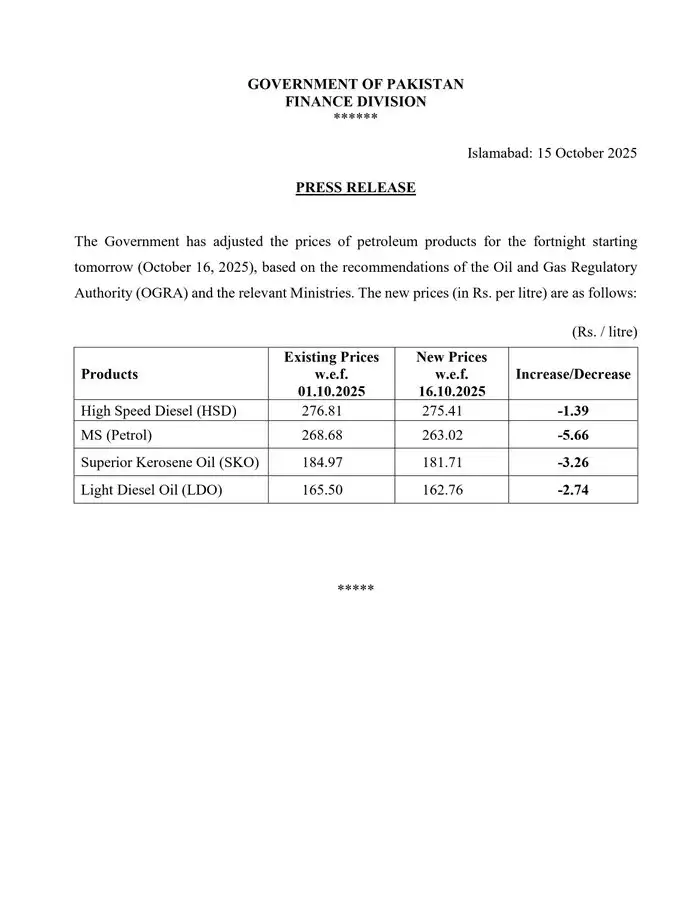
New Petrol and Diesel Prices in Pakistan (Effective October 2025)
As per the official notification the new fuel prices effective from October, 2025 are as follows:
| Product | Old Price (Rs/Litre) | New Price (Rs/Litre) | Change (Rs) |
|---|---|---|---|
| Petrol | 268.68 | 263.02 | -5.66 |
| High-Speed Diesel (HSD) | 276.81 | 275.41 | -1.39 |
| Kerosene Oil (SKO) | 184.97 | 181.71 | -3.26 |
| Light Diesel Oil (LDO) | 165.50 | 162.76 | -2.74 |
The new prices reflect a balanced adjustment in line with international oil market trends and domestic cost structures.
Detailed Overview of Price Reductions

Petrol Price Reduced by Rs5.66
Petrol widely used in motorcycles, cars and rickshaws has seen a drop from Rs268.68 to Rs263.02 per litre offering direct financial relief to millions of citizens. Since petrol consumption is highest among middle- and lower-income groups, this reduction is expected to slightly ease the household transportation burden.
Diesel Price Cut by Rs1.39
The price of high-speed diesel (HSD) primarily used in heavy transport, agricultural machinery, and trains, has been reduced by Rs1.39 per litre. As diesel directly affects transportation and logistics costs, this price cut could have a positive impact on inflation, especially in food and essential commodities.
Kerosene and Light Diesel Oil Rates Also Reduced
In addition to petrol and diesel the government also announced rate cuts for superior kerosene oil (SKO) and light diesel oil (LDO):
- Kerosene oil dropped by Rs3.26 per litre.
- Light diesel oil decreased by Rs2.74 per litre.
These fuels are commonly used in rural areas and low-income households, especially for cooking and lighting, which means the relief will reach a wider population.
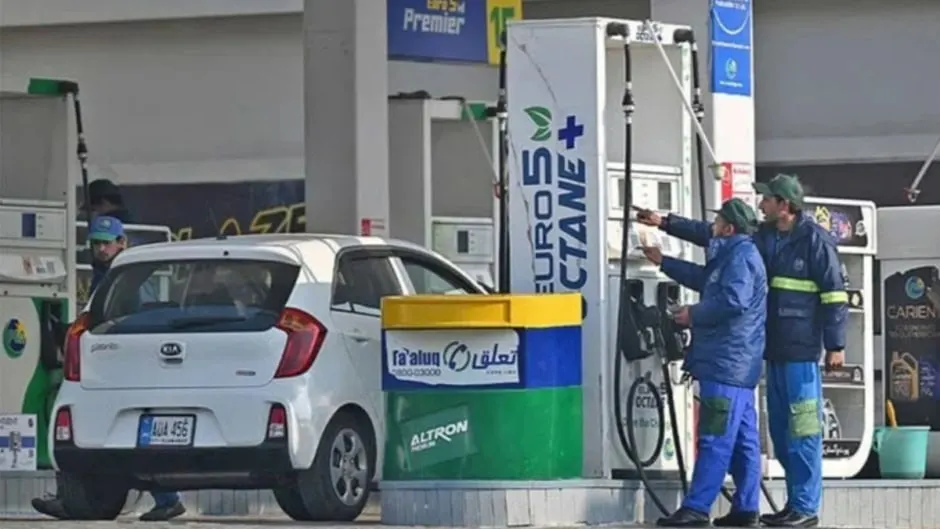
Tax Structure and Levies on Petroleum Products
Despite the price reductions the government continues to collect substantial revenue through petroleum levies and duties. Currently, general sales tax (GST) remains zero on all petroleum products but several other charges apply.
Breakdown of Government Charges
| Component | Rate (Approx. Rs/Litre) | Applies To |
|---|---|---|
| Petroleum Levy (PL) + CSL | 80.52 | Petrol & HOBC |
| Petroleum Levy (PL) + CSL | 79.50 | Diesel |
| Custom Duty | 17 – 18 | Petrol & Diesel |
| Distribution & Sale Margins | 17 | All Fuels |
Economic Impact of Petrol and Diesel Price Changes
The reduction in fuel prices is expected to influence multiple sectors of the economy:
Positive Effects
Reduced Transportation Costs: Lower diesel prices may decrease freight rates, leading to a drop in food and commodity prices.
Household Savings: Cheaper petrol will help middle-class families save on daily commuting expenses.
Agricultural Benefits: Diesel is crucial for running tractors and tube wells, so farmers may experience cost relief.
Challenges Ahead
Despite this temporary relief, Pakistan still faces challenges such as:
- Volatility in global crude prices
- Exchange rate fluctuations
- High import dependency for refined petroleum products
Economic analysts suggest that sustainable price stability will depend on international oil market trends and domestic fiscal policies.
Role of OGRA and the Finance Division
The Oil and Gas Regulatory Authority (OGRA) plays a central role in reviewing international market data, import costs, and exchange rates to recommend new petroleum prices to the Finance Division.
The Finance Division then issues an official notification confirming the final retail rates. This process ensures transparency and regular adjustments to reflect market dynamics.



